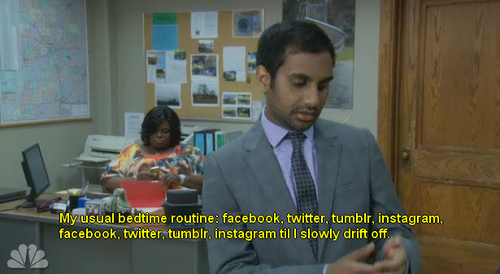by Vincenzo Marino – translated by Roberta Aiello
Greenwald and the “privatization of secrets”

Who is the owner of Edward Snowden’s leaks on global surveillance? Is it legitimate to use them as leverage to promote other activities or, apart from journalism, to unveil the truth? This week Mark Ames asks these questions on Pando.com, the website that recently took over the NSFW team of which Ames is part, to broaden its offering of investigative journalism. They are questions worth asking «given that Pierre Omidyar just invested a quarter of a billion dollars to personally hire Greenwald and Poitras for his new for-profit media venture», Ames explains, especially because they are now the only two people with full access to the files. Neither Snowden nor the Guardian nor the Washington Post have them in their possession and Greenwald has repeatedly stated that Snowden would have delivered the material to other people to ensure its publication in any case.
The accusation of Ames, who has been negative about the newco of Greenwald and Omidyar, is not just a judgment on the project, but represents also an ethical journalistic issue. Dynamics of this nature, such as the sacrifice of the individual to disclose information related to democratic matters, persuade the public to side with those who decide to challenge power without personal interests (Pentagon Papers, for example). In this case, the «heroic whistleblower story arc» has been bent to Greenwald’s interests, who has taken advantage of material of public interest to sell the exclusive (along with the alleged monopoly on the documents) «to a billionaire». Greenwald has delegated complete control of information of global importance also from the financial point of view – such as the collusion between the major tech companies and the U.S. government to control private citizens – to the discretion of the founder of one of those same companies. Although there have been no replies by those interested, it is still necessary to deepen more than one unclear question about the current ownnership of the leaks and the privileged relationship between Greenwald and his source (UPDATE: Greenwald replied here «for journalists linking to the Pando post – and other matters»).
The relationship between the reader and membership
 Image via NJL
Image via NJL
Satisfying the reader seems to be a winning trend, or at least to be pursued both in ‘ideal‘ and economic terms. This week Mathew Ingram of Gigaom analyzes the importance of reciprocity between newspapers and readers, starting from the project – overviewed by Ken Doctor – of a «paywall 2.0» model for the New York Times. The basis of this subscription would be a system of micro-paywalls around specific topic areas, to persuade the reader to subscribe to ‘vertical’ content such as food, real estate, and opinion. Ingram believes it would be more practical to focus on membership rather than on «premium» products similar to some already available. The writer thinks that social media broke the system of consumption of news as a simple product, emphasizing the “human desire”, the relationship between readers and newspapers, particularly with specific writers. «Not product, but people», Ingram says challenging the NYT to leave the «sometimes-know-it-all uncle» attitude (as synthesized by Doctor), unwilling to compromise with its users, and to embrace a model that implies ‘closeness’ and affiliation. The New York Times should find ways to monetize through the experience of the reader (not through the product), betting on different services (i.e. access to special offerings, event reviews) which the newspaper, due to the importance of the brand and the readership, can easily aim towards.
From this perspective, the choice of ProPublica which, this week, launches a crowdfunding campaign inviting its readers to «join our community» and become «ProPublican», might not be just a coincidence. It is a well-established trend. «The main goal of this approach is to establish a lasting and meaningful relationship with our readers. Conceived of as ‘members’ rather than ‘subscribers’», explains Ernst-Jan Pfauth of Medium. Pfauth is the publisher of a Dutch online magazine, born and raised on the participation of its readers, which has become a publishing example. In a post where he tells the story of the setting-up of his De Correspondent, great emphasis is put on the business model which focuses on the relationship with the reader who is to be considered the ultimate user of the editorial work, not just a product to sell to advertisers («the ultimate goal is to improve journalism, not to fill the pockets of shareholders»). There is an exchange with the audience which goes beyond the reading, allowing the reader to become the only real «ambassador» and the only means of «sponsorship» of the work of the website. A strategy that seems to work (De Correspondent has raised $1.7 million) so far, Pfauth explains, and that over time it is helping to build a broad basis of readers, members, and not just ‘visitors’.
The death of TV and the search for mobile attention

The “newspaper” is not the only media to suffer the effects of the general downward trend. In a post titled «TV Is Dying, And Here Are The Stats That Prove It», Jim Edwards of Business Insider analyzes a number of figures that explains the inevitable crisis of the medium. In the third quarter of 2013, all the major TV providers lost 113,000 subscribers, for a total of 5 million subscribers lost between 2010 and the end of this year (including cable and broadband). There are fewer and fewer televisions turned on, and fewer and fewer houses that host a television, against an «audience» that on Facebook and Google surpasses the entire volume of TV contacts. The number does not explain the flow of users leaving TV because they prefer multimedia content, but shows a clear trend. Mobile tools are replacing television, attracting the attention of their holders, especially at prime time.
The tablet – and the mobile in general – dominates Internet in the first and second segment of the evening and, according to research conducted by Cisco, global consumption of videos on mobile devices is expected to increase exponentially from year to year.
This is also the case for the investment of advertisers who are beginning to prefer digital media to old tv, which always gets the ‘lion’s share’ in advertising. According to research by Macquarie Capital, there is still a marked discrepancy between the hours spent on mobile devices and the flow of advertising investment. In the next few years, this tendency should move most of the advertisers from TV and newspapers to digital. It is a transfer that many are trying to intercept (Amazon, above all) and that has led Yahoo to hire the journalist Katie Couric as Global Anchor. The TV personality, who is well-known to the public, should become «the face of Yahoo news» with the aim of attracting as many users as possible to the pages of the group and of offering content adapted «to each of the screens», as explained on Mashable. Meanwhile, this week, the mobile version of the sports website ESPN has once again edged that of the desktop.
The «digital diaspora» of the newsrooms

Is it true that the rise of mobile devices allows journalism to live far away – and without problems – from the middle of where news happens? This is the question that Nikki Usher of NiemanLab asks, starting from the Miami Herald newsroom case. The newspaper moved about 12 miles from the city center and its journalists are wondering if the new far-away arrangement is a benefit or a disadvantage. The Herald is not the only newspaper to undergo this decentralization: it is a trend that has continued to emerge in the last few months, forcing newspapers to sell their property (not least of which, the Washington Post for $159 million) and abandon their historic headquarters to move to cheaper buildings «far away from where the news is happening» (as occurred at Corriere della Sera in Italy with its headquarters at via Solferino). If it was not the economic crisis to force it to optimize all the items of expenditure, it would be the digital production paradigm to impose smaller, well organized spaces for different products, to accommodate the construction of new ones and reduce costs.
The migration of newsrooms becomes interesting from a symbolic and industrial point of view in an era where they seem to be almost entirely superfluous, being able to build editorial products anywhere. The Miami Herald journalists – in the testimonies gathered by Nikki Usher who has been following this topic for weeks – continue largely to prefer physical proximity with news and fellow journalists, not settling for a table and an access point in a Starbucks. The newsroom still acts as a collector of ideas and needs to live in the center of the scene to be able to tell the stories of an entire city and deal with its citizens (especially in the case of the Miami Herald which is a local newspaper). Therefore, it is worth considering carefully what gets lost in this «digital diaspora», Usher concludes.



